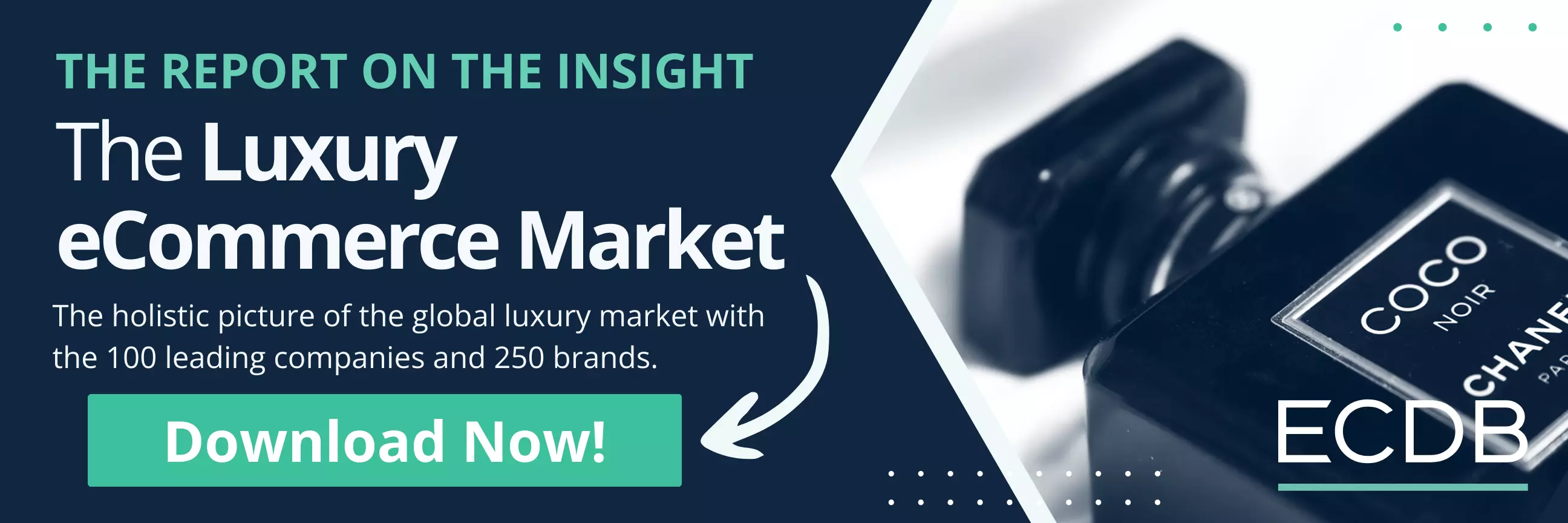Ecommerce: Global Luxury Market
Luxury Goods Market: Net Sales Development, Online & Offline Sales
Where does luxury shopping take place? Is it an entirely offline industry, or is the exclusive industry opening up to be integrated into the online world? Find out all the details about the luxury goods market in ECDB's latest market report.
Article by Nashra Fatima | May 02, 2024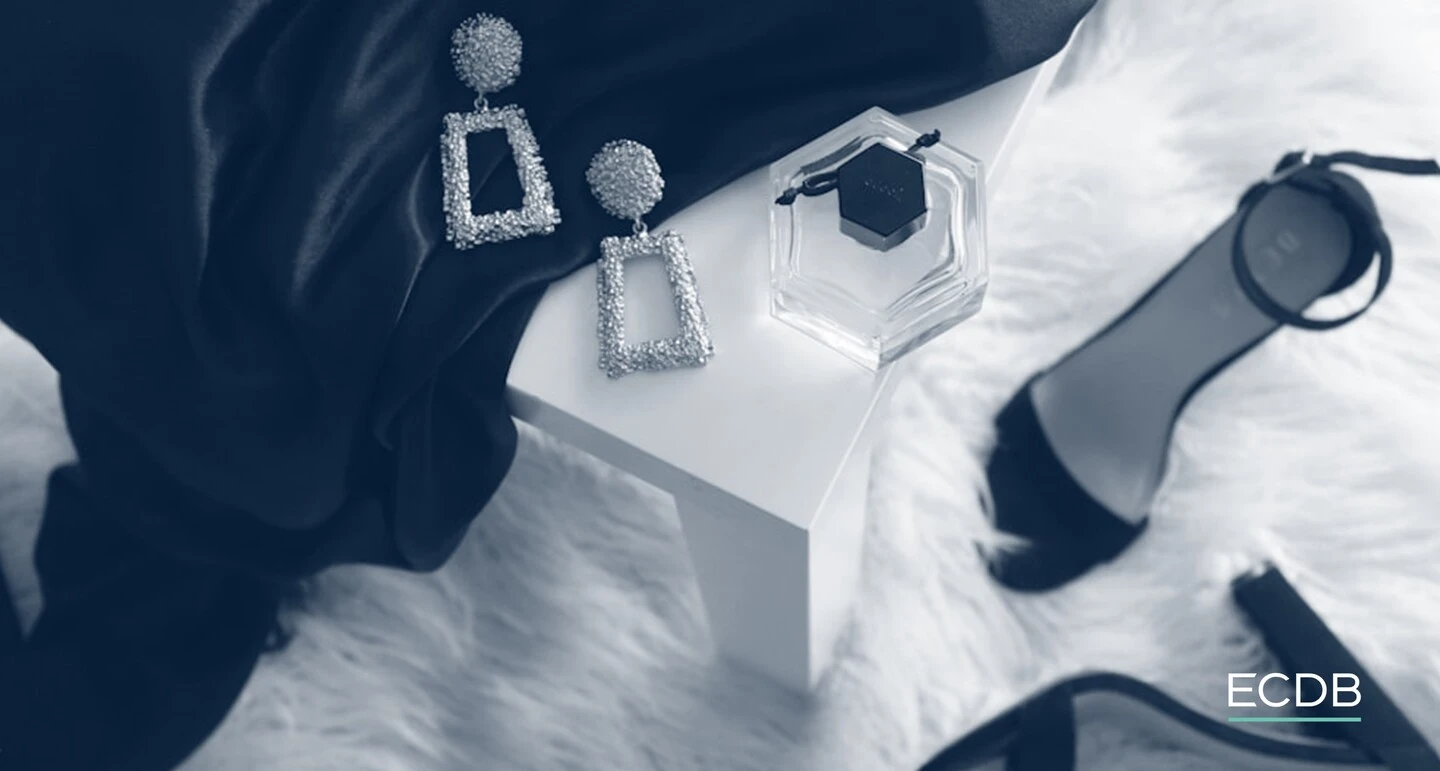
Luxury Goods Market: Key Insights
Luxury Goes Online: The luxury market is moving towards eCommerce, accelerated by the pandemic, with online sales surging to 18.8% of total luxury sales in 2021.
Growth Trends: Luxury goods eCommerce grew at a CAGR of 17% between 2020 and 2022, which indicates that luxury retail has seen rising digital adoption.
Technology Impact: Advancements in technology and changing consumer behavior are driving the shift, prompting luxury brands to adopt omnichannel strategies and invest in AI-driven personalization.
Future Developments: As luxury brands and consumers embrace digital shopping experiences, the online luxury market is set for continued growth in the coming years.
Insights Available: For in-depth analysis, explore ECDB's Luxury eCommerce Market Report covering the impact of COVID-19, regional dynamics, sales channels, and product categories insights.
The once strong focus of luxury markets on offline sales has changed, especially since the COVID-19 pandemic. When the pandemic forced widespread store closures in 2020, the luxury industry, alongside several others, reeled from the impact.
Since then, eCommerce has continued to make inroads into the luxury goods market. Despite the resurgence of offline sales in 2022, the boutique-to-browser trend remains strong.
Our analysis of the development of the online market share in luxury is noteworthy, especially as solid data on the luxury market is scarce. The eCommerce growth rate in the luxury and non-luxury segments varies significantly – but why? The answers are in our data.
Online Market Share in Luxury Goods
While not as large as physical store sales, eCommerce revenue in the luxury sector has remained stable. Online sales constituted 18.8% of total global luxury sales in 2021 - a marked increase from 2020. This figure indicates a groundbreaking shift occurred in the luxury market in 2021: more people than before began shopping online in an industry where in-store shopping has ruled.
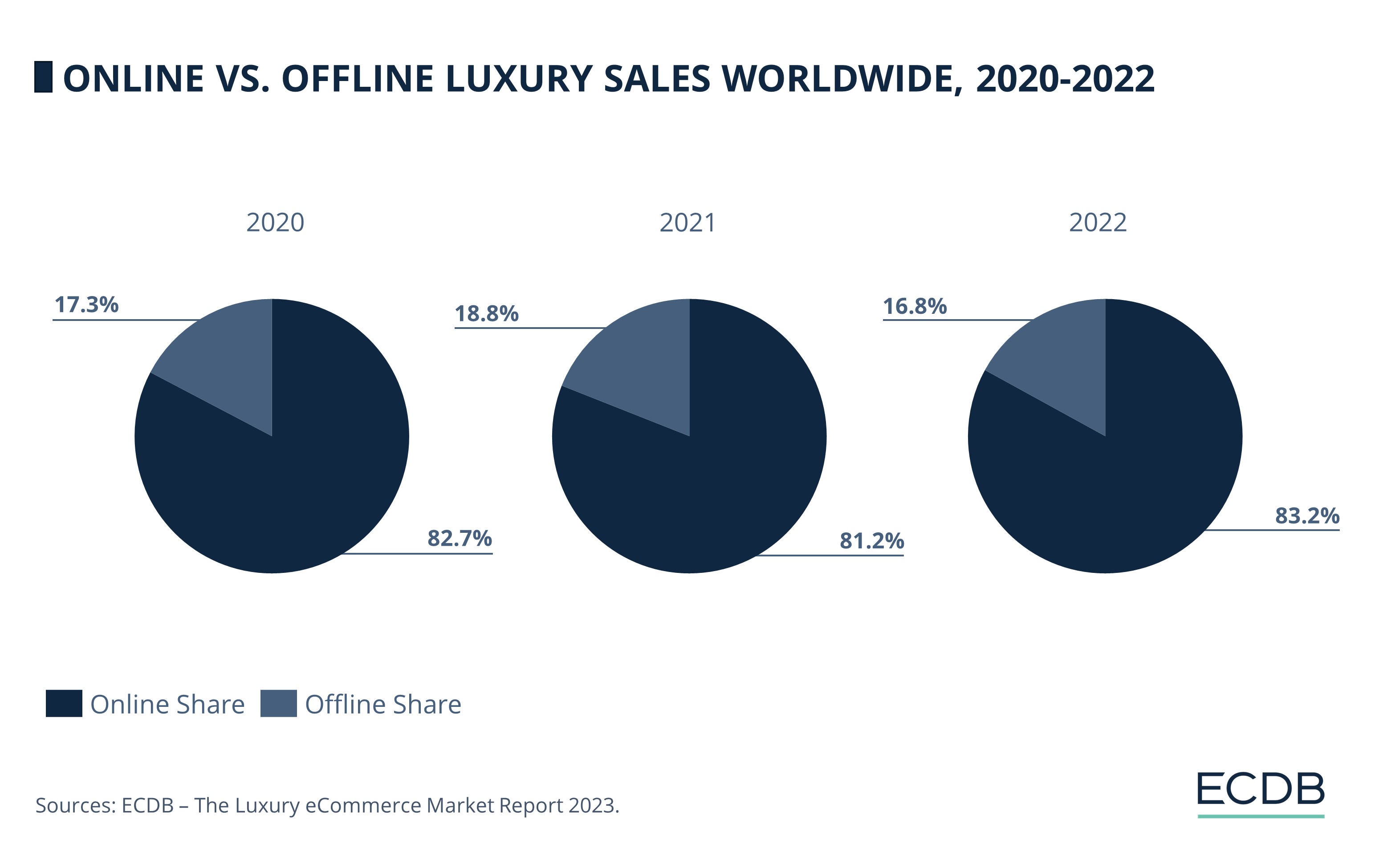
Offline shopping dominates in luxury for several reasons. Luxury companies and consumers alike have preferred shopping in stores because it ensures greater exclusivity.
By selling predominantly in stores, brands make sure their exclusive products remain out of mass reach. Moreover, they can exercise better control over the customer’s journey from start to end. For consumers, shopping in boutiques offers a remarkable experience, complete with sensory engagement and exceptional service.
Nevertheless, the pandemic incited interesting transformations within the luxury market. As storefronts across the globe shut down, online channels emerged as a viable alternative for companies to connect with their consumers.
After the start of the pandemic, the online share in luxury jumped by 38% in 2021, to make up 18.8% of all luxury sales. From US$42 billion in 2020, the online market reached an unprecedented US$58 billion in 2021. The following year, even with the reopening of stores, the online segment remained largely stable and generated US$57 billion in sales. These trends indicate that the shift from offline to online in the luxury market may grow in the upcoming years, despite the return of brick-and-mortar stores to normal operations.
Market Analysis: Luxury vs. Non-Luxury eCommerce, CAGR and Trends
The average yearly growth of online sales in global luxury (fashion and personal care segments) indicates that although late to integrate eCommerce, the industry is catching up.
Between 2020 and 2022, the online market growth of the luxury goods market was significantly larger than that of the non-luxury segment.
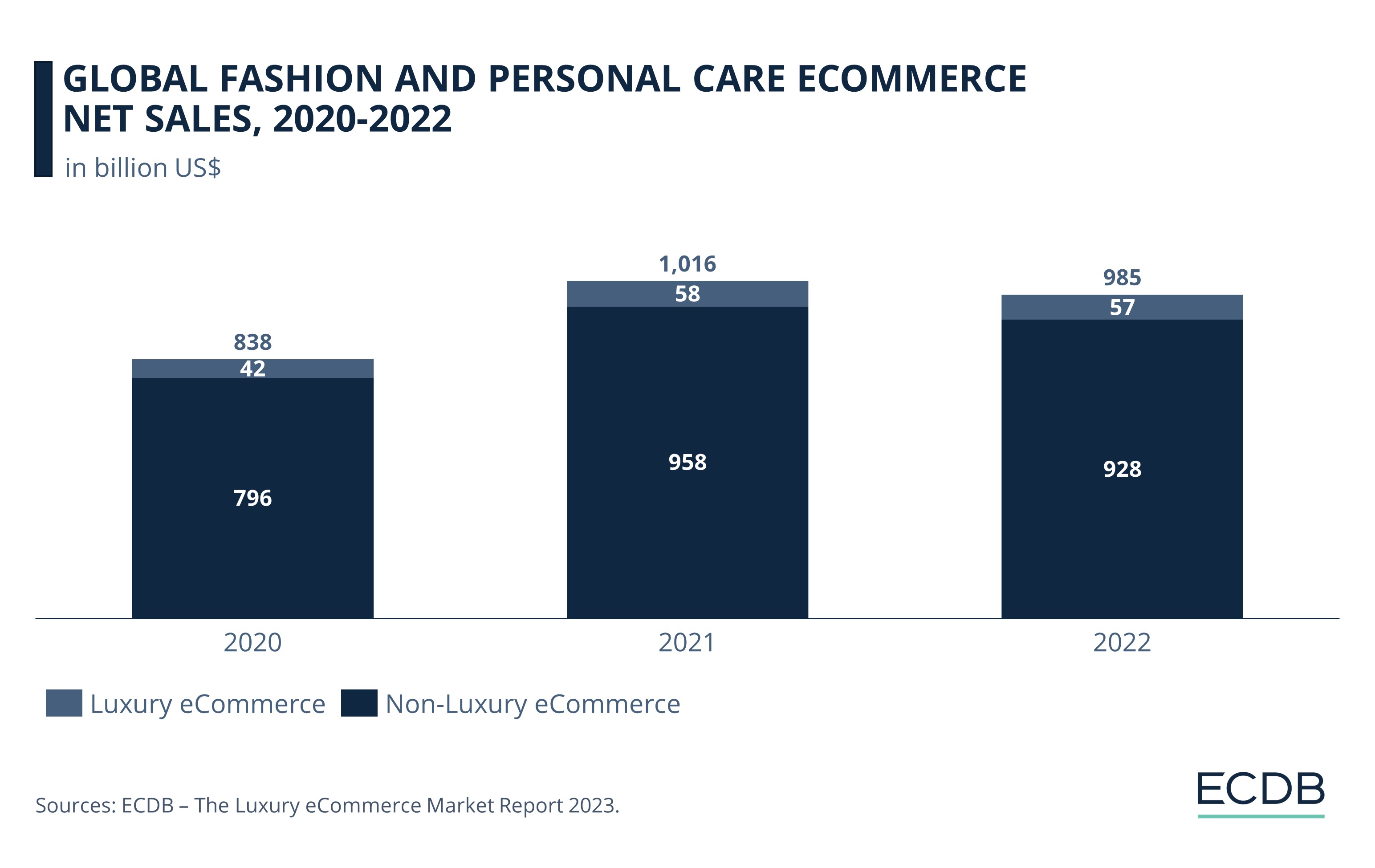
In 2020, the first year of the pandemic, luxury products accounted for 5% of the total eCommerce market for fashion and personal care goods. However, the online share rose steadily in the next two years to constitute 5.8% of the same market by 2022. This upward trend suggests that eCommerce is finding its footing in the luxury industry.
In absolute terms, the size of the luxury eCommerce market grew from US$42 billion in 2020 to US$57 billion in 2022. Its compound annual growth rate (2020-2022) is 17%, well above the 8% CAGR for its non-luxury counterpart (fashion and personal care goods).
In contrast, non-luxury eCommerce, while more mature than luxury, had a significantly lower CAGR for the same period. The online share of non-luxury grew from 2020 to 2021, but as stores reopened in most regions, the eCommerce market shrank from US$958 billion in 2021 to US$928 billion in 2022.
With a CAGR of 17%, the online market for personal luxury goods is miles ahead of its non-luxury counterpart (CAGR: 8%). The luxury goods eCommerce market is also ahead of the overall eCommerce market for fashion and personal care goods (CAGR: 8.4%).
The retail landscape has undergone a technology-driven evolution in recent years. Digital penetration, the ubiquity of mobile phones, and COVID-induced changes in consumer behavior have all boosted online shopping. See how this is expected to impact innovations in the online luxury market.
Luxury Goods Market: The Future of Online Shopping
Exclusivity is one of the main concerns of luxury companies. Not only high price points, but also an exclusive in-store distribution strategy have made it easier for brands to gate keep their products or sell only to a certain type of consumer.
The offline-to-online transition for luxury brands has finally reached this industry as a result of the eCommerce trend.
Now that both luxury companies and consumers have tasted the benefits of digital shopping, the globalization of the industry through online platforms is well underway. High-end brands with strong capital backing have dabbled in AI-driven personalization, experiential or immersive luxury, and virtual fashion such as the Metaverse Fashion Week – all made possible by advances in eCommerce technology.
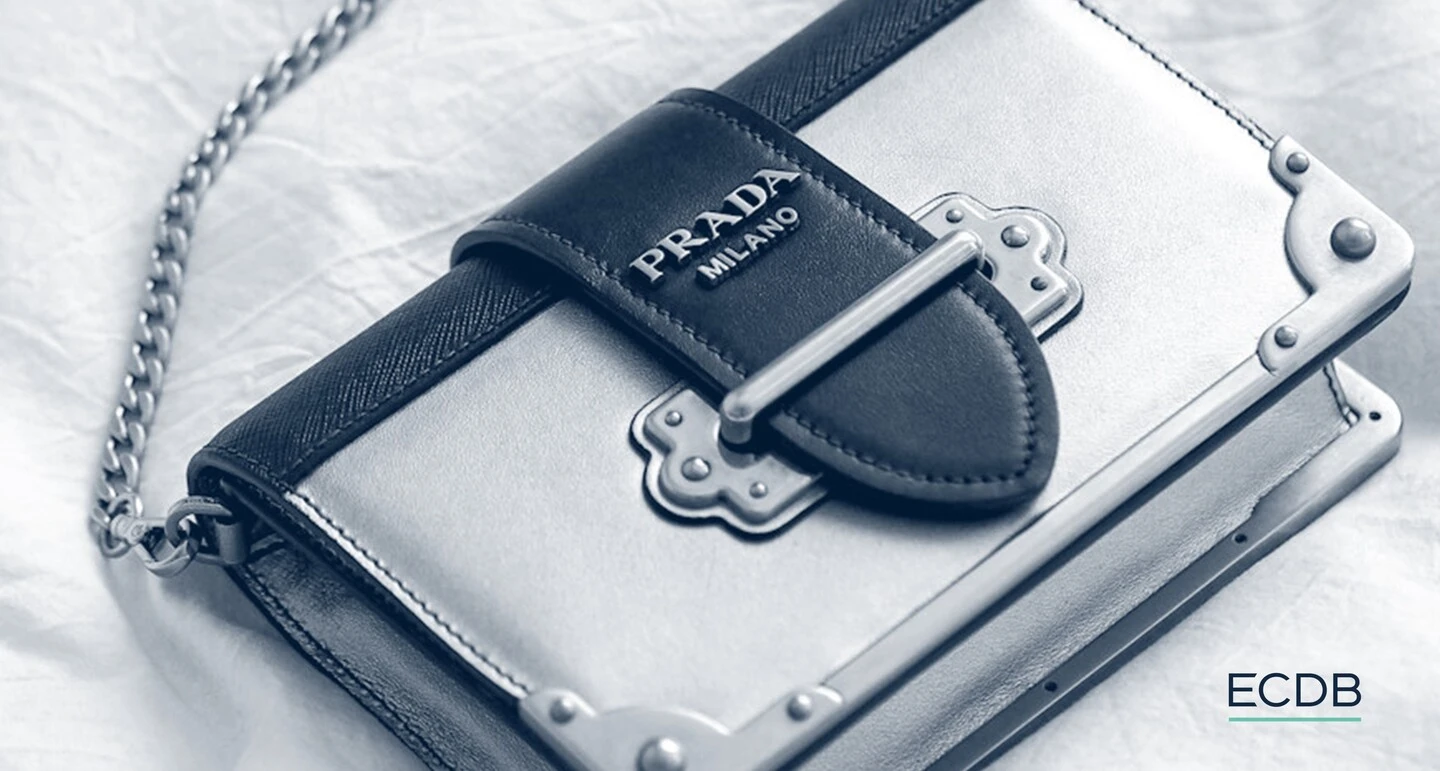
Brands are also rapidly adopting omnichannel strategies to serve their customers through online-offline integration. The relevance of technology to the luxury segment is no longer deniable. As online shopping dynamics evolve and companies find new ways to create meaningful engagement with their audiences, the luxury eCommerce market will continue to grow in the coming years.
The Luxury Goods Market: Players & Category Insights 2023 – Available Now
Are you searching for an in-depth analysis of the online market for luxury goods? Order ECDB’s exclusive report on The Luxury eCommerce Market: Players and Category Insights 2023 here.
The study provides a comprehensive overview of the personal luxury market with a focus on eCommerce. Next to an in-depth market analysis, readers will learn about the impact of Covid on the global luxury market, regional dynamics, sales channels (Business-to-Business and Direct-to-Consumer), as well as insights into different product categories.
The study further features an exclusive list of 250 leading luxury brands, including detailed performance metrics and brand properties, such as exclusivity and brand positioning. All sales numbers are provided for 2020 to 2022.
Related insights
Article
Top Luxury Brands: Global Market Concentration, Trends & Online Net Sales
Top Luxury Brands: Global Market Concentration, Trends & Online Net Sales
Article
Chow Tai Fook: Strong Online Sales Growth
Chow Tai Fook: Strong Online Sales Growth
Article
Global Luxury Online Sales by Region: APAC, Americas & EMEA Markets
Global Luxury Online Sales by Region: APAC, Americas & EMEA Markets
Article
U.S. Luxury Goods Market: Top Brands & Companies, Online Sales, Growth
U.S. Luxury Goods Market: Top Brands & Companies, Online Sales, Growth
Article
Luxury Goods Market in Italy: Online Net Sales, Leading Brands & EuroItalia
Luxury Goods Market in Italy: Online Net Sales, Leading Brands & EuroItalia
Back to main topics
